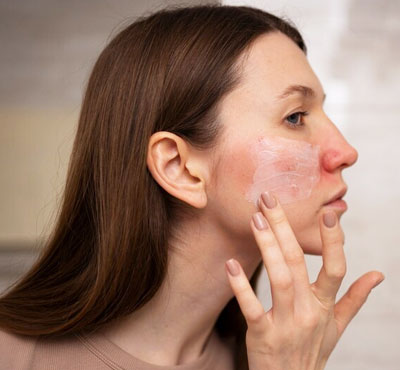What Is Dermatitis?
Dermatitis is a definition covering a series of layers of skin lesions to cause an inflammatory state and redness, swelling and itching. It can happen in literally all organs or systems and may be acute (for a short duration) or chronic (long duration). Dermatitis is not contagious but can induce unpleasant feelings and suffering due to the symptoms caused by it.
Symptoms of Dermatitis
The symptom of dermatitis is associated with disease type and disease severity. Common symptoms include:-
- Redness & Swelling - Inflamed skin that appears red and swollen.
- Itching - Daytime and nighttime pruritus which can be exacerbated by contact with irritants.
- Rashes - Sites of inflamed survival tissue (i.e., edematous) that can become hypertrophic, exulcerate, and scab.
- Dry, Scaly Skin - Dry, cracked, and scaly skin is linked with (chronic) dermatitis and its clinical manifestation.
- Pain or Burning Sensation - Affected areas may feel sore or tender.
Causes of Dermatitis
Dermatitis develops due to complex genetic, environmental, and immune system interplay. Common causes include:-
- Genetics - Having a family history of dermatitis asthma or allergies heightens the risk.
- Irritants - Soaps, detergents, chemicals and fabrics can lead to skin irritation.
- Allergens - Rhinitis, asthma, Urticaria and food allergies may be provoked by pollen, mites of the Dermatophagoidea genus, animal dander and some foodstuffs.
- Stress - Emotional stress can exacerbate symptoms in some individuals.
- Weather Conditions - Severe heat and skin drying by low humidity can dehydrate the skin and make it more sensitive.
Types of Dermatitis
Atopic Dermatitis (Eczema)
- AD is a chronic condition that is often associated with allergic rhinitis and asthma. It commonly affects children but can persist into adulthood.
Contact Dermatitis
This occurs when the skin is exposed to an irritant/allergen. It is categorized into:-
- Irritant Contact Dermatitis - Triggered by exposure to harsh chemicals or irritants.
- Allergic Contact Dermatitis - Caused due to an allergic reaction to chemicals (e.g., nickel, fragrance ingredient, or latex).
Seborrheic Dermatitis
- This form affects areas rich in oil glands, such as the scalp, face, and chest. It is widely attributed to dandruff and easily aggravated by the winter season.
Dyshidrotic Dermatitis
- These are the small, pruritic papules on extremities, which are more commonly seen in a state of stress, or moist commensal environment.
Nummular Dermatitis
- Looks like round coin-like patches of inflamed skin, most often on the limbs.
Stasis Dermatitis
- This subtype occurs in the lower extremities due to poor circulation and oedema.
Diagnosis at Dermavision - The Skin Clinic
Accurate diagnosis is essential for effective treatment. At the Dermavision - The Skin Clinic, our dermatologists make use of an integrated strategy in the evaluation of dermatitis classification and aetiology: -
- Medical History - Gathering details about symptoms, triggers, and family history.
- Physical Examination - Identifying the pattern and location of the rash.
- Patch Testing - Identifying allergens responsible for contact dermatitis.
- Skin Biopsy - Presented in an excellent quality, to rule out other skin diseases.
Treatment Options for Dermatitis
Dermatitis treatment is focused on relief of symptoms, suppression of inflammation and control of relapse.
Topical Treatments
- Corticosteroid Creams - Reduce inflammation and itching during flare-ups.
- Non-Steroidal Creams - Calcineurin inhibitors (e.g., tacrolimus) are suitable for sensitive areas.
- Emollients - Regular use of moisturizers helps restore the skin barrier.
Oral Medications
- Antihistamines - Relieve itching and improve sleep.
- Immunosuppressants - prescribed for severe cases to reduce immune system activity.


